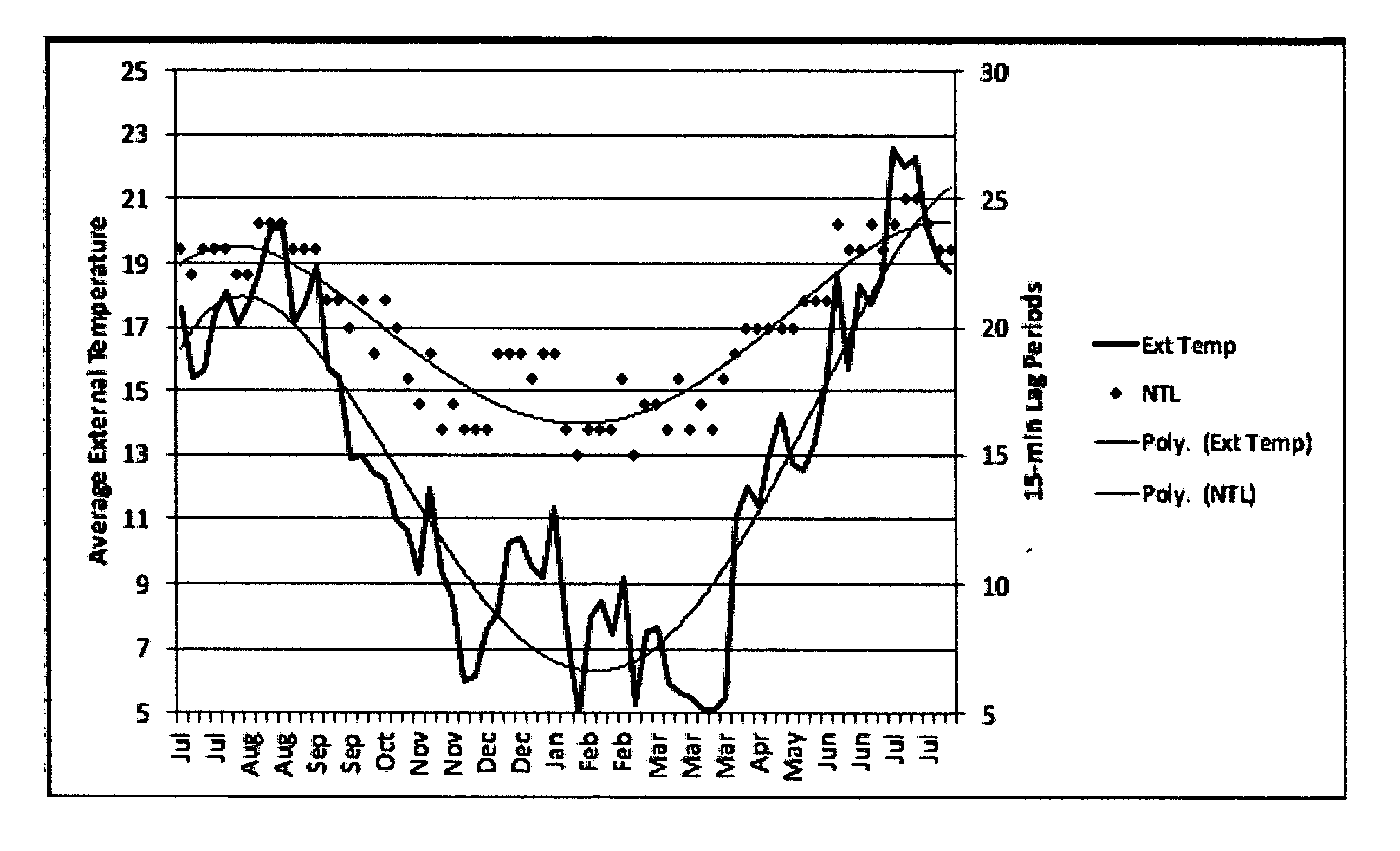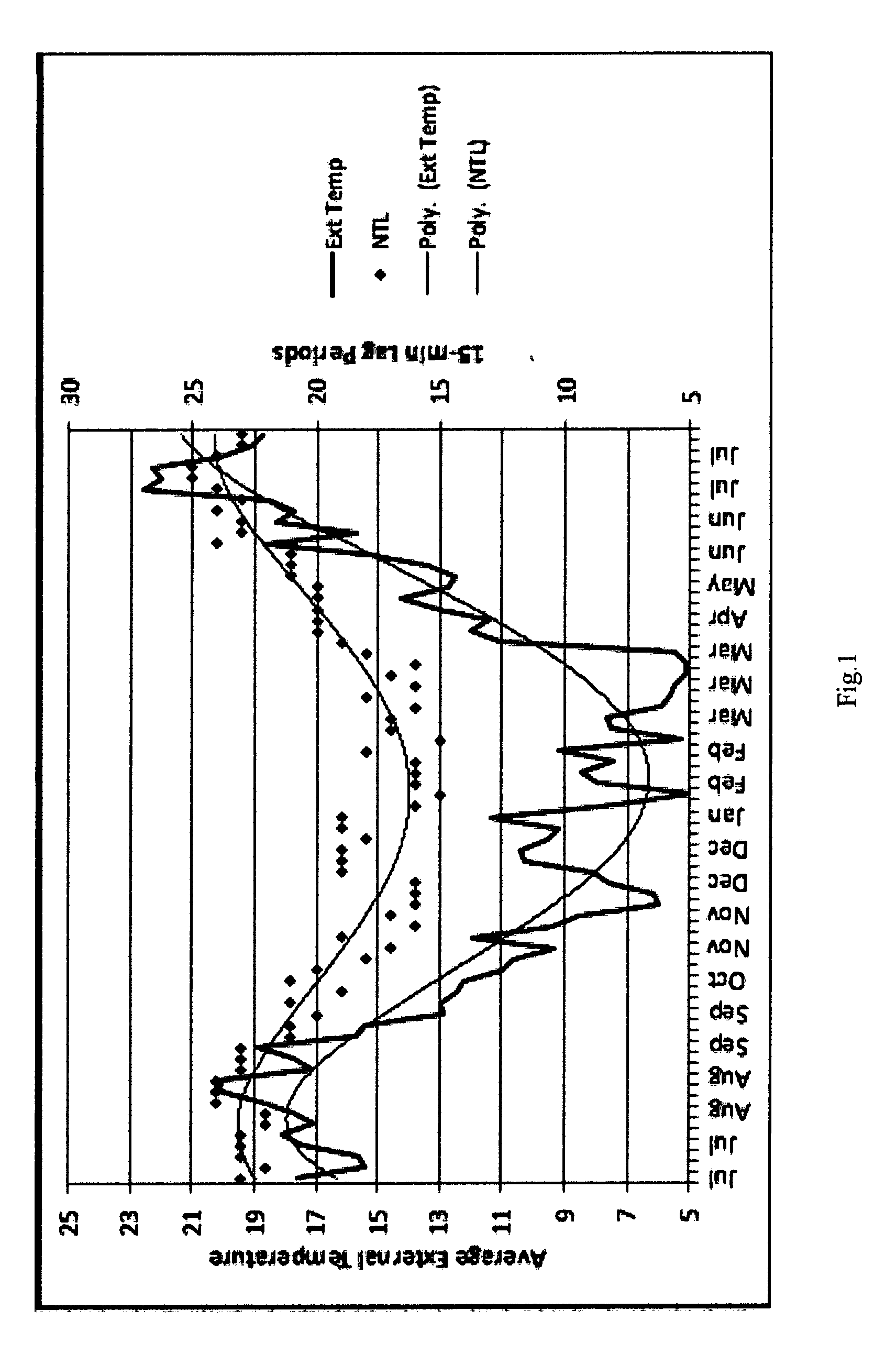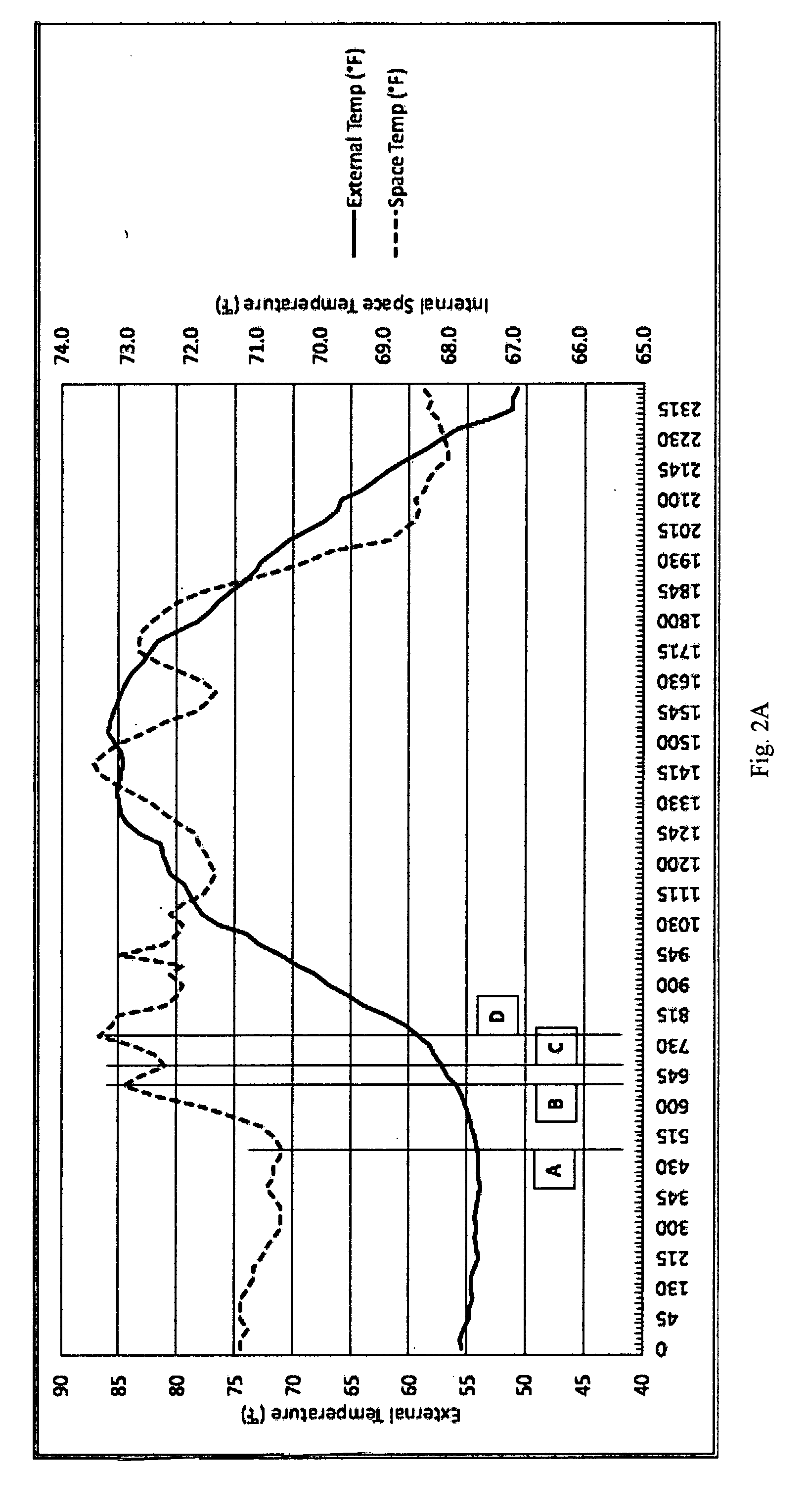Method of controlling ventilation and chilling systems to conserve energy in commercial buildings
- Summary
- Abstract
- Description
- Claims
- Application Information
AI Technical Summary
Benefits of technology
Problems solved by technology
Method used
Image
Examples
Embodiment Construction
Introduction
[0039]The invention is a computer system capable of connecting directly to a commercial building management system. The purpose of the invention computer system is to provide improved control of plant operations to enable significant energy savings in commercial buildings while providing desirable occupant comfort levels.
[0040]This section describes the introduction of two new thermal profiles, the manner in which these profiles along with the natural thermal lag described in publication number 2013-0304269 A1 and publication number 2015-0198961 A1 can be applied to the control of plant in a particular building, and finally, the application of these concepts to an actual building and the energy reduction results. Two new building specific thermal profiles are introduced and are referred to as the Overnight Forced Ventilation Rate (OFVR) and Day-time Forced Air Replacement (DFAR).
[0041]Following publication number 2013-0304269 A1, where the derivation of a building's natu...
PUM
 Login to View More
Login to View More Abstract
Description
Claims
Application Information
 Login to View More
Login to View More - R&D
- Intellectual Property
- Life Sciences
- Materials
- Tech Scout
- Unparalleled Data Quality
- Higher Quality Content
- 60% Fewer Hallucinations
Browse by: Latest US Patents, China's latest patents, Technical Efficacy Thesaurus, Application Domain, Technology Topic, Popular Technical Reports.
© 2025 PatSnap. All rights reserved.Legal|Privacy policy|Modern Slavery Act Transparency Statement|Sitemap|About US| Contact US: help@patsnap.com



